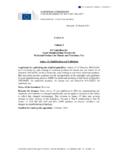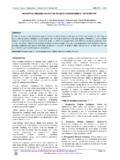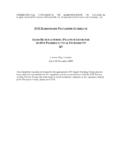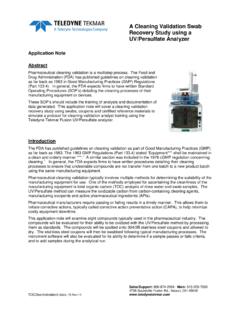Transcription of Guidelines on good manufacturing practices: validation ...
1 75 Annex 3 Guidelines on good manufacturing practices : validation , Appendix 7: non sterile process validation1 BackgroundThe appendices of the Supplementary Guidelines on good manufacturing practices : validation currently comprise the following:Appendix 1. validation of heating, ventilation and air conditioning systems Appendix 2. validation of water systems for pharmaceutical use Appendix 3. Cleaning validation Appendix 4. Analytical method validationAppendix 5. validation of computerized systems Appendix 6. Qualification of systems and equipment Appendix 7. Non sterile process validation revised text reproduced in this Annex1. Background and scope 762. Glossary 763. Introduction 784. process design 805. process qualification 816. Continued process verification 837. Change management 84 References 851 Supplementary Guidelines on good manufacturing practices : validation .
2 In: WHO Expert Committee on Specifications for Pharmaceutical Preparations: fortieth report. Geneva: World Health Organization; 2006: Annex 4 (WHO Technical Report Series, No. 937).76 WHO Technical Report Series No. 992, 2015 WHO Expert Committee on Specifications for Pharmaceutical Preparations Forty-ninth report1. Background and scopeFurther to the Supplementary Guidelines on good manufacturing practices : validation , as published in the World Health Organization (WHO) Technical Report Series, No. 937 (1), additional Guidelines to support current approaches to good manufacturing practices (GMP) are published here. These Guidelines are intended to further support the concept of process validation linked to quality risk management (QRM) and quality by design principles as described by WHO and the International Conference on Harmonisation of Technical Requirements for Registration of Pharmaceuticals for Human Use (ICH).
3 These Guidelines allow for different approaches to process validation . The principles described are mainly applicable to non sterile finished pharmaceutical dosage forms. Similar approaches may be applicable to active pharmaceutical ingredients (APIs) and sterile products. (See also recommendations in WHO Technical Report Series, No. 957, Annex 2 (2) and WHO Technical Report Series, No. 961, Annex 6 (3).)A risk based and life cycle approach to validation is knowledge of product and process development studies; previous manufacturing experience; and QRM principles are essential in all approaches to process validation , as the focus is now on the life cycle approach. The life cycle approach links product and process development, validation of the commercial manufacturing process and maintaining the process in a state of control during routine commercial use of process analytical technology (PAT), which may include in line, online and/or at line controls and monitoring, is recommended to ensure that a process is in a state of control during GlossaryThe definitions given below apply to the terms used in these Guidelines .
4 They may have different meanings in other Measurement where the sample is removed, isolated from, and analysed in close proximity to the process validation . validation carried out during routine production of products intended for sale in exceptional circumstances when data from replicate production runs are unavailable because only a limited number of batches have been produced, batches are produced infrequently or batches are produced by a validated process that has been modified. Individual batches may be evaluated and released before completion of the validation exercise, based on thorough monitoring and testing of the 377control strategy. A planned set of controls, derived from current product and process understanding that assures process performance and product quality.
5 The controls can include parameters and attributes related to API and finished pharmaceutical product materials and components, facility and equipment operating conditions, in process controls, finished product specifications and the associated methods and frequency of monitoring and process verification. Documented scientific evidence that the process remains in a state of control during commercial process parameter. A process parameter whose variability has an impact on a critical quality attribute and therefore should be monitored and/or controlled to ensure the process produces the desired quality attribute. A physical, chemical, biological or microbiological property or characteristic of materials or products that should be within an appropriate limit, range or distribution to ensure the desired product Measurement where the sample is not removed from the process stream: can be invasive or non cycle.
6 All phases in the life of a product from the initial development through marketing until the product s discontinuation (ICH Q8 (4)).matrix approach or bracketing. Bracketing is the assessment of a single parameter or variable by identifying the edge(s) of the range of conditions for the parameter or variable and assessing these during validation to span the possible range of that parameter or variable. For example, bracketing can be applied to process parameters, multiple pieces of identical equipment and/or different size considerations for the same product. The rationale for using this strategy should be justified, documented and involves the assessment of the effect of more than one parameter or variable by using a multidimensional matrix to identify the worst case or extreme conditions for a combination of parameters or variables.
7 These conditions are used during validation of the process , rather than validating all possible combinations. Matrixing is typically used when there are significant similarities between products in a product family ( the same product with different strengths in the manufacturing stage or different products with a similar container closure in the packaging stage). The rationale for using this strategy should be justified, documented and use of a matrix approach or bracketing design would not be considered appropriate if it is not possible to demonstrate that the extremes are limited to the batches, products, strengths, container sizes or fills. For those excluded from the exercise there should be no risk to process Measurement where the sample is diverted from the manufacturing process , and may be returned to the process quality system.
8 Management system to direct and control a pharmaceutical company with regard to Technical Report Series No. 992, 2015 WHO Expert Committee on Specifications for Pharmaceutical Preparations Forty-ninth reportprocess qualification. process qualification combines the actual facility, utilities, equipment (each now qualified) and the trained personnel with the commercial manufacturing process , control procedures and components to produce commercial batches; confirms the process design and demonstrates that the commercial manufacturing process performs as validation . The collection and evaluation of data, from the process design stage through to commercial production, which establishes scientific evidence that a process is capable of continuously delivering the finished pharmaceutical product meeting its predetermined specifications and quality target product profile (QTPP).
9 A prospectively documented summary of the quality characteristics of a finished pharmaceutical product (FPP) that ideally will be achieved to ensure the desired quality, taking into account safety and efficacy of the FPP. The QTPP forms the basis of design for the development of the product and typically would include: intended use in clinical setting, route of administration, dosage form, delivery systems; dosage strength(s); container closure system; therapeutic moiety release or delivery and attributes affecting pharmacokinetic characteristics ( dissolution, aerodynamic performance) appropriate to the FPP dosage form being developed; FPP quality criteria ( sterility, purity, stability and drug release) appropriate for the intended marketed release testing.
10 The ability to evaluate and ensure the quality of in process and/or final product based on process data, which typically include a valid combination of measured material attributes and process of control. A condition in which the set of controls consistently provides assurance of continued process performance and product IntroductionProcess validation data should be generated for all products to demonstrate the adequacy of the manufacturing process . The validation should be carried out in accordance with GMP and data should be held at the manufacturing location whenever possible and should be available for validation is associated with the collection and evaluation of data throughout the life cycle of a product from the process design stage through Annex 379to commercial production and provides scientific evidence that a process is capable of consistently delivering a quality product.
















